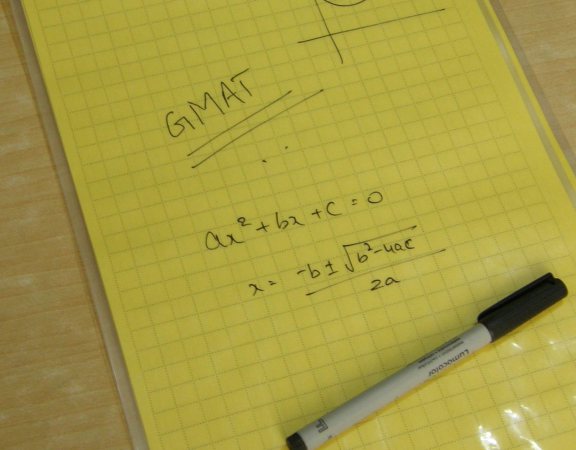Three Common CR Assumptions and How to Spot Them
What do you really get out of an MBA and will it help you?
April 24, 2022
How to “cheat” on the GMAT
May 14, 2022Three Common CR Assumptions and How to Spot Them
Today’s post comes from Eliza Chute who has been tutoring both the GMAT and the LSAT for over a year, in addition to running a GMAT prep website with course comparisons and study advice. She will be starting her JD/MBA next fall at NYU through the Jacobson Leadership Program in Law and Business. Prior to her tutoring career, Eliza spent several years in Southeast Asia training local activists and entrepreneurs on human rights, environmental studies and social entrepreneurship.
I find it easiest to think of assumptions as statements that connect the premises to the conclusion. If we read CR prompts closely on the GMAT, we will find that many of these passages have missing links between the premises and the conclusion. These missing links can be as obvious as
James is eating spaghetti; therefore it is Friday.
or as subtle as
A survey of college students found that most students perform better on logical reasoning exams taken in the afternoon rather on those taken the morning. Therefore brain function is best in the afternoon.
The subtlety of the missing link depends on the difficulty level of the question. Spotting the missing link, especially for 700-level questions, can be difficult, and it doesn’t come naturally. But understanding the common missing links can make them easier to spot. So here are three common missing links to look out for:
Subset vs. Whole
Often the GMAT will try to trick us by giving premises that only apply to a subset of a group, and then claiming that a conclusion is true for the entire group. For example,
A survey of people in New York City found that people preferred hot coffee to iced coffee. Therefore, Americans prefer their coffee hot.
The problem here is that they are assuming that the survey results would be the same for all Americans, when they only asked people in New York. People in other parts of the country could prefer iced coffee, making the conclusion false.
X being better than Y means X is the best
Another subtle change in language often used in CR prompts is when the premises clearly prove that X is a better option than Y, but the conclusion states that X is the best of all options. This is a leap in logic. Take a look at this example:
A study showed that cleaning solution A removes more bacteria than cleaning solution B. Therefore, the hotel will remove the most bacteria by using cleaning solution A.
This argument falsely assumes that, because A is better than B, A is the best. What if there is a cleaning solution C that works better than both A and B? Or what if A and B together remove more bacteria than A alone?
Correlation vs. Causation
Another common logical leap is that correlation (two things happening at the same time) equals causation (one thing causing another thing). Just because two results occur together doesn’t mean that one causes the other. And even if one is causing the other, it’s impossible to know which causes which. Take, for instance, this example:
A compilation of data from Baskin-Robbins showed that stores with more ice cream flavors generate more ice cream sales. Therefore, all stores should offer more ice cream flavors in order to increase their sales.
The author of this argument is assuming that the higher sales are a result of the greater number of flavors being offered. While this seems logical, we have no way to know if this is really true. For example, Baskin-Robbins stores may offer more flavors as the result of sales, the opposite of what the author presupposes. Or, a third underlying cause may affect both data points—for example, stores with larger counters may have more room for both flavors and customers.
In summary
To spot assumptions, think about whether the conclusion necessarily follows from the premises. Another way to frame this question is whether there is a way for the premises to be true, but the conclusion to be false.
Understanding the missing links between the premises and the conclusion can help you with other question types as well. For example, the correct answer to a Weaken question is often something that exploits the missing link. The correct answer to a Flaw question often points out the missing link. And the correct answer to a Strengthen question usually fills in the gap left by the missing link.


